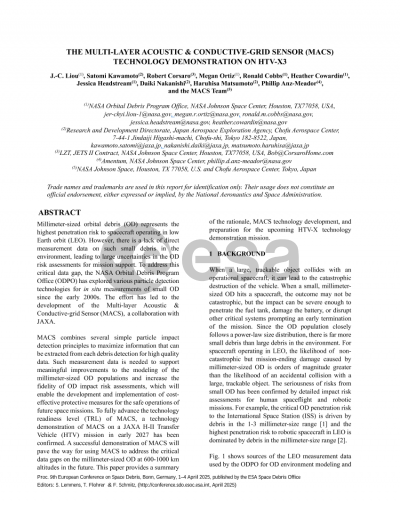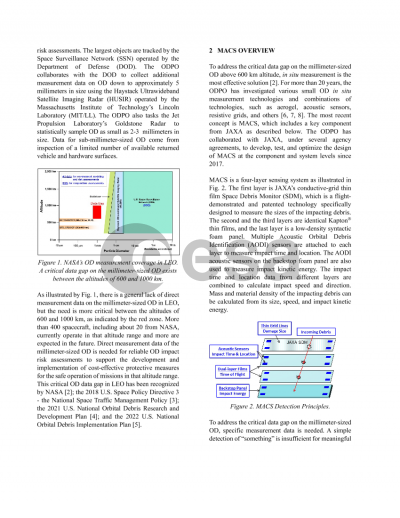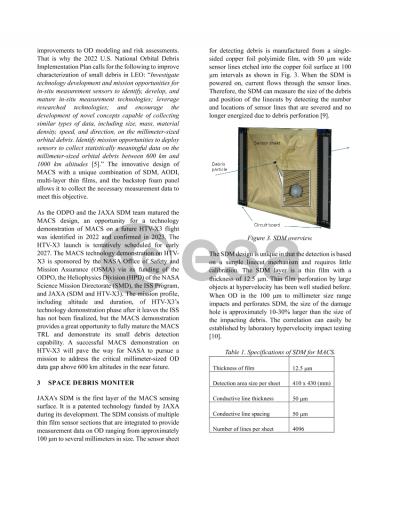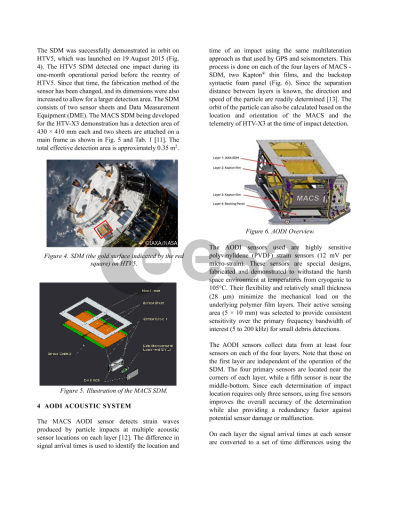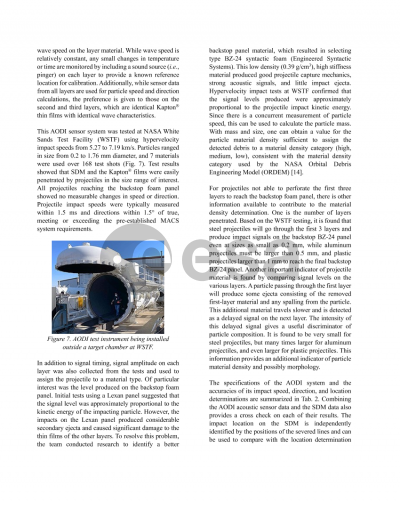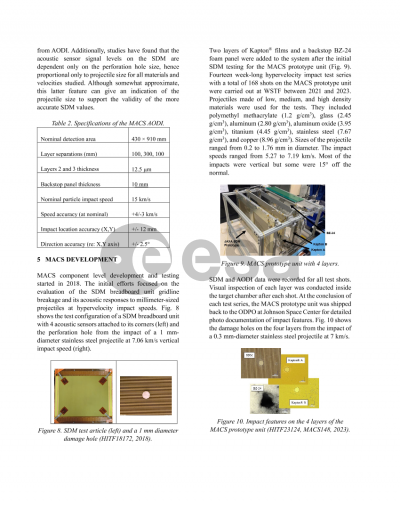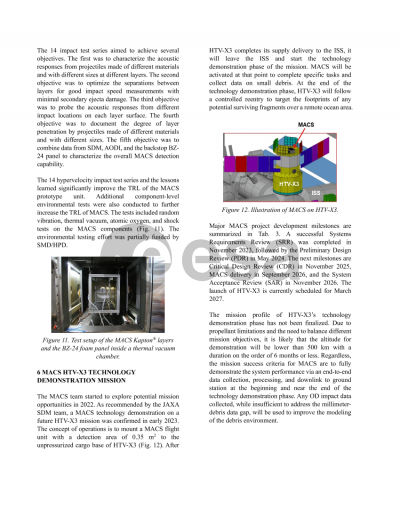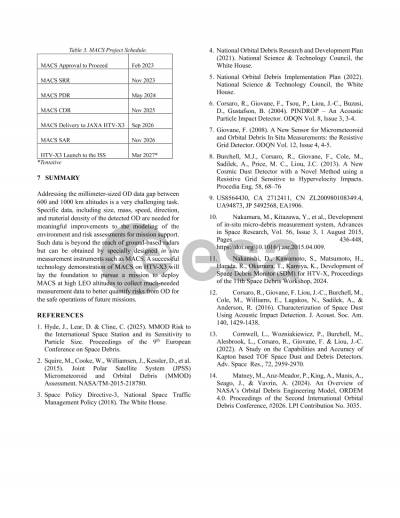Document details

Abstract
Millimeter-sized orbital debris represents the highest penetration risk to spacecraft operating in low Earth orbit (LEO), however, there is a lack of direct measurement data on such small debris in the environment. The need for the data is more critical at altitudes between 600 km and 1000 km where hundreds of spacecraft operate and where more are expected in the future. Direct measurement data of millimeter-sized orbital debris is needed for reliable orbital debris impact risk assessments to support the development and implementation of cost-effective protective measures for the safe operations of future space missions. This critical orbital debris data gap in LEO has also been recognized by the 2018 U.S. National Space Traffic Management Policy, the 2021 U.S. National Orbital Debris Research and Development Plan, and the 2022 U.S. National Orbital Debris Implementation Plan.
The NASA Orbital Debris Program Office (ODPO) has explored various particle detection technologies for in situ measurements of small orbital debris since the early 2000s. The effort has led to the development of the Multi-layer Acoustic & Conductive-grid Sensor (MACS), a collaboration with JAXA. MACS combines several simple detection principles to maximize information that can be extracted from each debris detection for high quality data to support meaningful improvements to the definition of the small orbital debris populations in LEO.
MACS is a four-layer sensing system. The first layer is JAXA’s conductive-grid thin film Space Debris Monitor (SDM), which is a patented and flight-demonstrated sensor specifically designed to measure the sizes of the impacting debris. The second and the third layers are identical Kapton® thin films, and the last layer is a low-density syntactic foam panel. Multiple acoustic sensors are attached to each layer to measure impact time and location. The acoustic sensors on the foam panel are also used to measure impact kinetic energy. The combination of data from all four layers provides information on the size, mass, material density, impact time, speed, and direction of each impacting orbital debris particle.
The ODPO has established several agency agreements with JAXA to develop, test, and optimize the design of MACS since 2017. An opportunity for a technology demonstration of MACS on a future HTV-X3 flight was identified in 2022 and confirmed in 2023. The HTV-X3 launch is tentatively scheduled for late 2026. The MACS technology demonstration on HTV-X3 is sponsored by the NASA Office of Safety and Mission Assurance, NASA Science Mission Directorate, and the International Space Station (ISS) Program. The mission profile, including altitude and duration, of HTV-X3’s technology demonstration phase after it leaves the ISS has not been finalized, but the MACS demonstration provides a great opportunity to fully mature the MACS technology readiness level and demonstrate its small debris detection capability. This will pave the way for NASA to pursue a mission to address the critical millimeter-sized orbital debris data gap above 600 km altitude in the near future.
Preview
